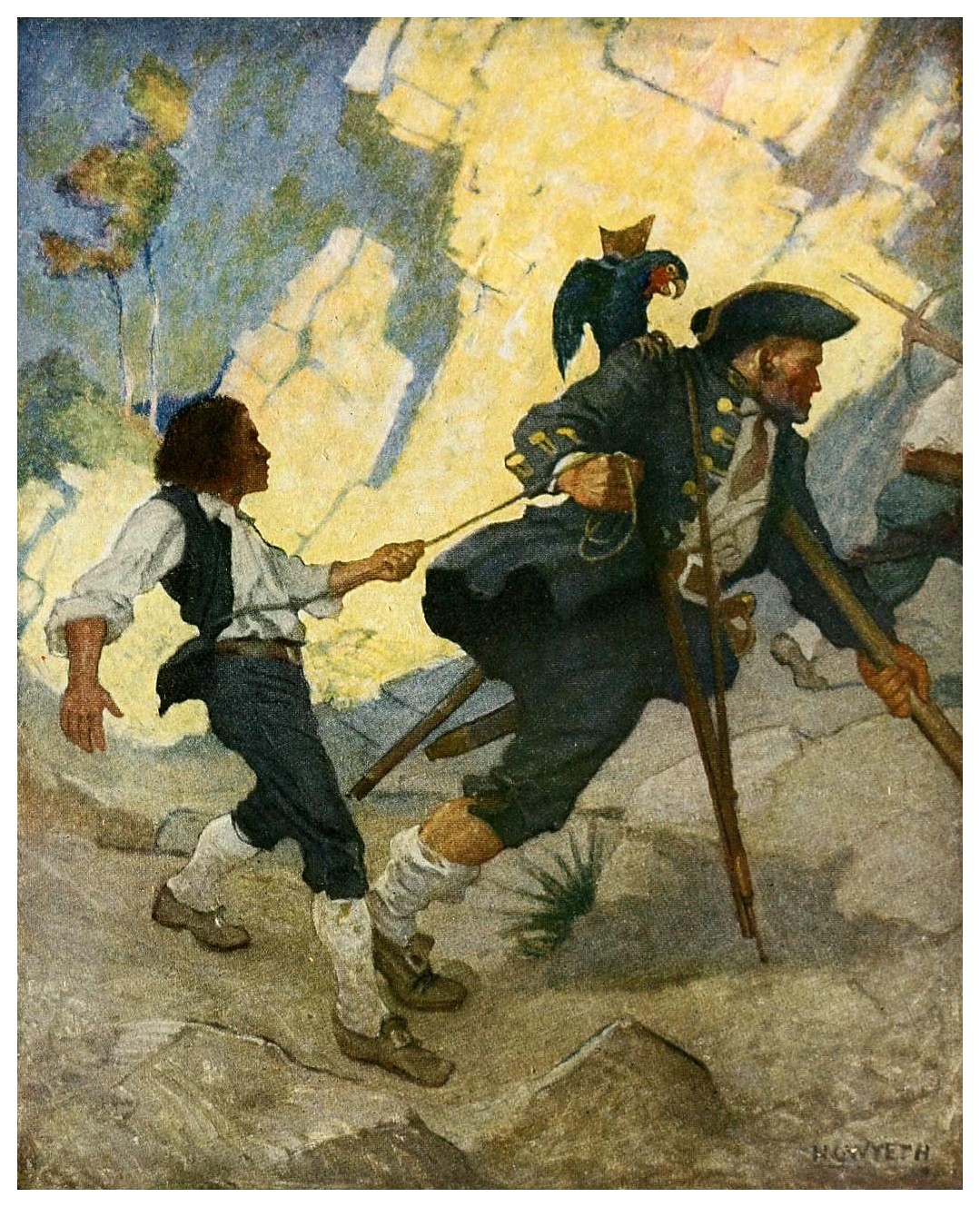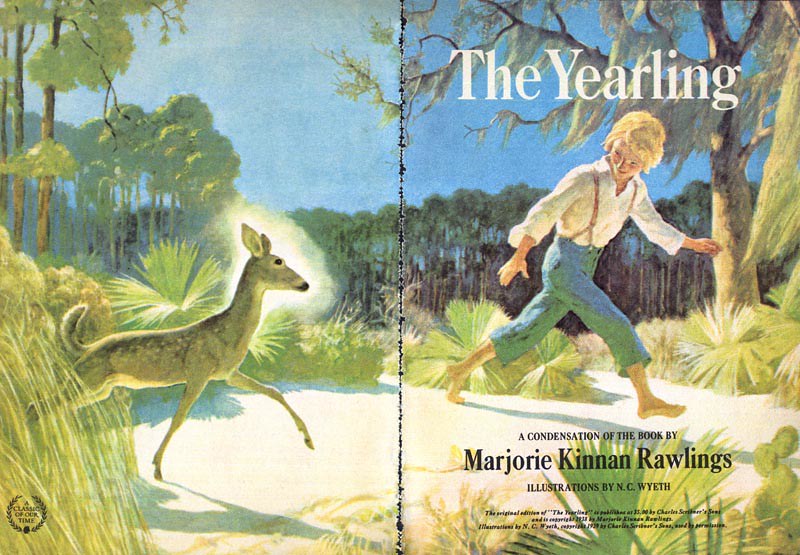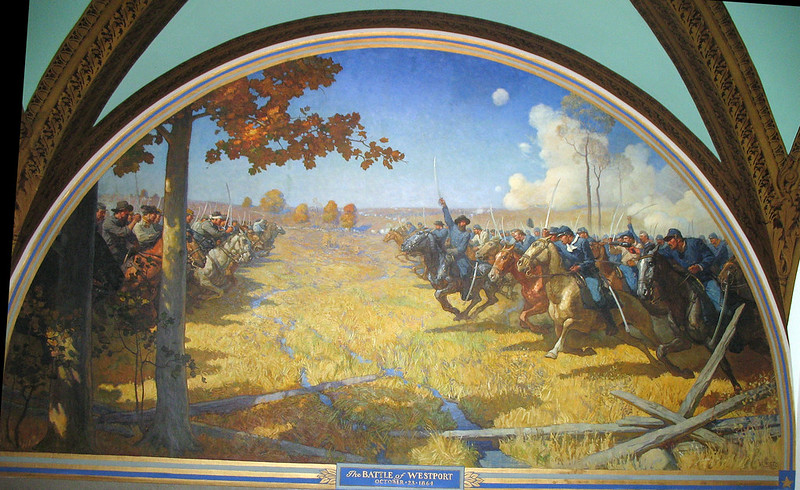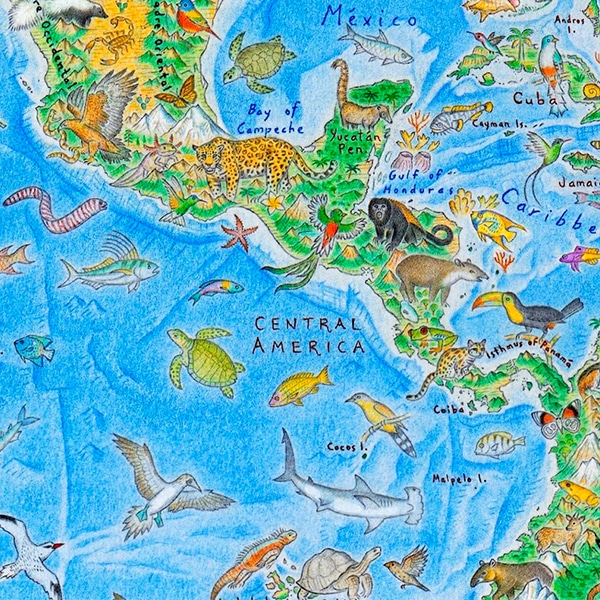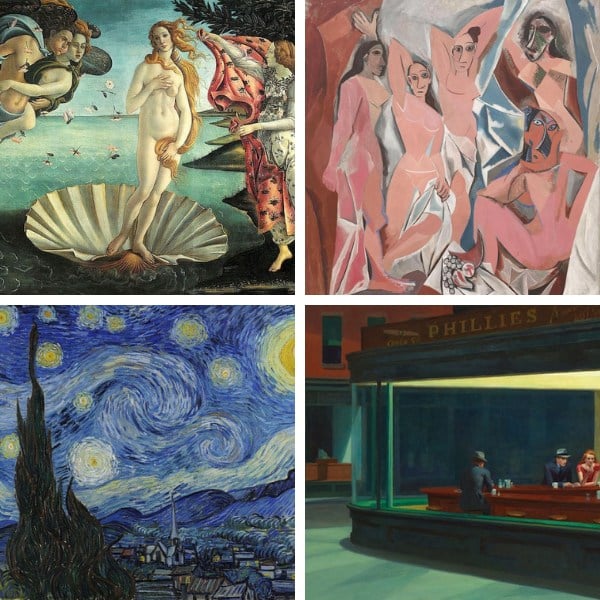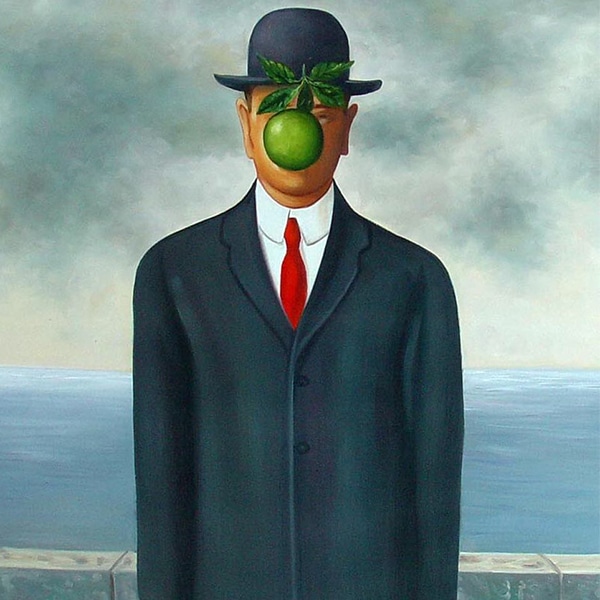In an era that’s known as the Golden Age of illustration, illustrator Newell Convers Wyeth (aka N.C. Wyeth) was one of its superstars. The American painter contributed illustrations to over 100 books and painted over 4,000 images.
His realistically rendered pictures visualized classic tales like Treasure Island, The Last of the Mohicans, and Robinson Crusoe. Wyeth also created illustrations for advertising campaigns such as Coca-Cola and Kellogg’s Foods. While considered one of the most successful illustrators of his time, Wyeth also had a thriving studio practice that included murals and private commissions—though it was commercial illustrations where he found the most fame.
Wyeth was a prolific artist and illustrator whose studio and residence in Chadds Ford, Pennsylvania, can still be viewed today. Read to learn more about his background, notable works, and the tragedy that ended his life at the age of 62.
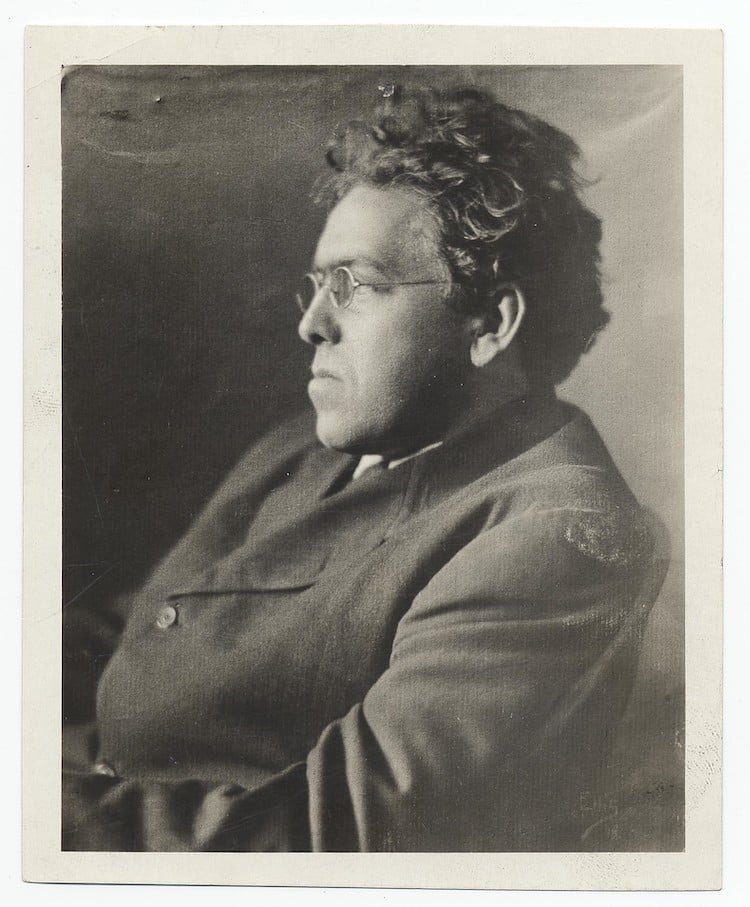
N. C. Wyeth, ca. 1920. Charles Scribner's Sons Art Reference Department records, 1839-1962. (Photo: Archives of American Art, Smithsonian Institution)
Who Was N.C. Wyeth?
Early Life and Education
N.C. Wyeth was born in Needham, Massachusetts, in 1882. He was interested in art from an early age and was encouraged by his parents to pursue his drawing. He enrolled in art schools during his youth and attended private classes taught by artists. When Wyeth was 20 years old, he moved to Wilmington, Delaware, and began to study with Howard Pyle.
Pyle himself was one of the most famous illustrators of the 19th century, and near the end of his career, he began teaching. He took Wyeth on as a student in 1901 and encouraged him, along with his other students, to “jump into their paintings to know the place.”
For Wyeth, that meant heading West on three trips between 1904 and 1906. He spent that time working as a field hand and being a mail carrier. He depicted the experiences in drawings that dramatized the Old West. The illustrations appeared in prominent magazines at the time including Harper’s Monthly, Ladies’ Home Journal, McClure’s, and Scribner Classics.
Wyeth’s American Illustration Career
In 1903, when Wyeth was 21 years old, he had his first illustration commission sold to the Saturday Evening Post. It would be eight more years before he’d take on his first book: Treasure Island for the renowned publisher Charles Scribner’s Sons. The commission included 17 paintings that are still lauded today as a pinnacle of illustration during the early 20th century. These images, which were created at a much larger scale, showcase Wyeth’s ability to convey character and action that support the narrative—and even add to—the story.
The success of Treasure Island kept Wyeth illustrating with Scribner’s. He created imagery for “boy’s adventure tales” that included The Boy's King Arthur (1917), The Mysterious Island (1918), and The Last of the Mohicans (1919). Beyond Scribner’s, he illustrated titles including Robin Hood for David McKay in 1917, Robinson Crusoe for Cosmopolitan in 1920, and Rip Van Winkle for David McKay in 1921.
Advertising was also part of Wyeth’s portfolio. His clients included Cream of Wheat, Coca-Cola, and General Electric. During WWI and WWII, he did his part and illustrated patriotic images for the government and the American Red Cross.
In addition to working with printed matter, Wyeth was nationally recognized as a muralist. His commissions included a Civil War battle scene at the Missouri State Capitol in Jefferson City, completed in 1920. This began the first of many murals done in the 1920s and 1930s that often depicted historical events. Wyeth’s work could be seen in the Federal Reserve Bank in Boston, the Hotel Roosevelt and Franklin Savings Bank in New York City, the National Geographic Society in Washington, D.C., and more.
Wyeth as Fine Arts Painter
Before the widespread adoption of cameras in magazines and other publications around 1920, illustration was the means by which pictures were paired with the printed word. They were important, and well-known illustrators (like Wyeth) were legitimately famous—and making a lot of money.
But despite the rock-star success that illustrators could have, the field was not as highly regarded as fine art painting. Illustrations, after all, were produced en mass for readers of all kinds. Because of their accessibility and often ephemeral nature, they weren’t seen as precious as paintings. The subject matter wasn’t considered high-brow like a work shown in a gallery.
Wyeth felt this friction and attempted to escape it by cultivating a painting practice outside of his illustration career. Although he had some traction, he never achieved the level of success in painting that he had with illustration.
Wyeth’s Family and Untimely Death
In 1906, Wyeth married Carolyn Brenneman Bockius. They lived in Wilmington, Delaware, before moving to Chadds Ford, Pennsylvania, in 1908. This place was special to Wyeth, as it had been the place where Howard Pyle had his summer school. In 1911, Wyeth purchased 18 acres of property where he built a house and studio.
Wyeth and Carolyn would go on to raise five children. Andrew Wyeth, one of his kids, became a well-known painter most famous for his work titled Christina’s World. His grandson, Andrew’s son, is Jamie Wyeth who has followed in his footsteps as a painter.
Wyeth met a tragic death at a railroad crossing in Chadds Ford in 1945 when an oncoming train his car. He was 62 years old. The collision killed both him and his young grandson who was nearly 4 when he died.
Visiting Wyeth’s Studio
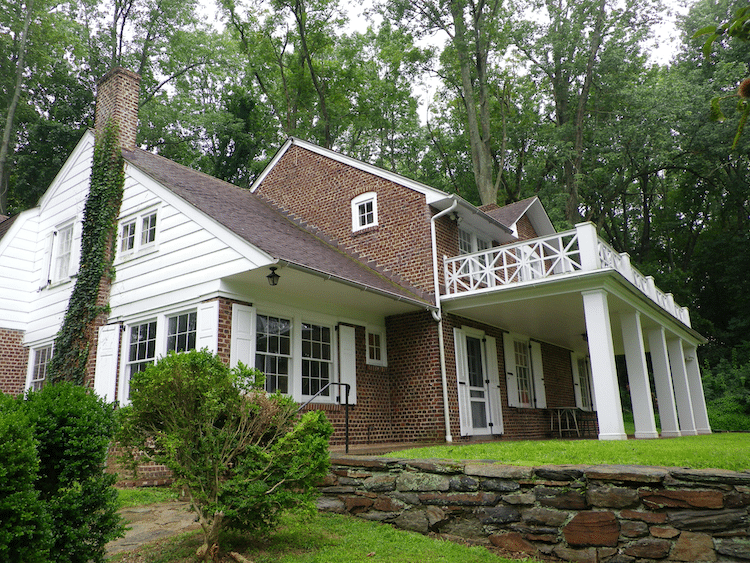
Wyeth House in Chadds Ford, Pennsylvania (Photo: Dmadeo, via Wikimedia Commons, CC BY-SA 3.0)
You can see where Wyeth lived and worked. His estate in Chadds Ford was restored to its original appearance around the time of his death. It’s now managed by the Brandywine River Museum, and you can take a tour of his home and studio.
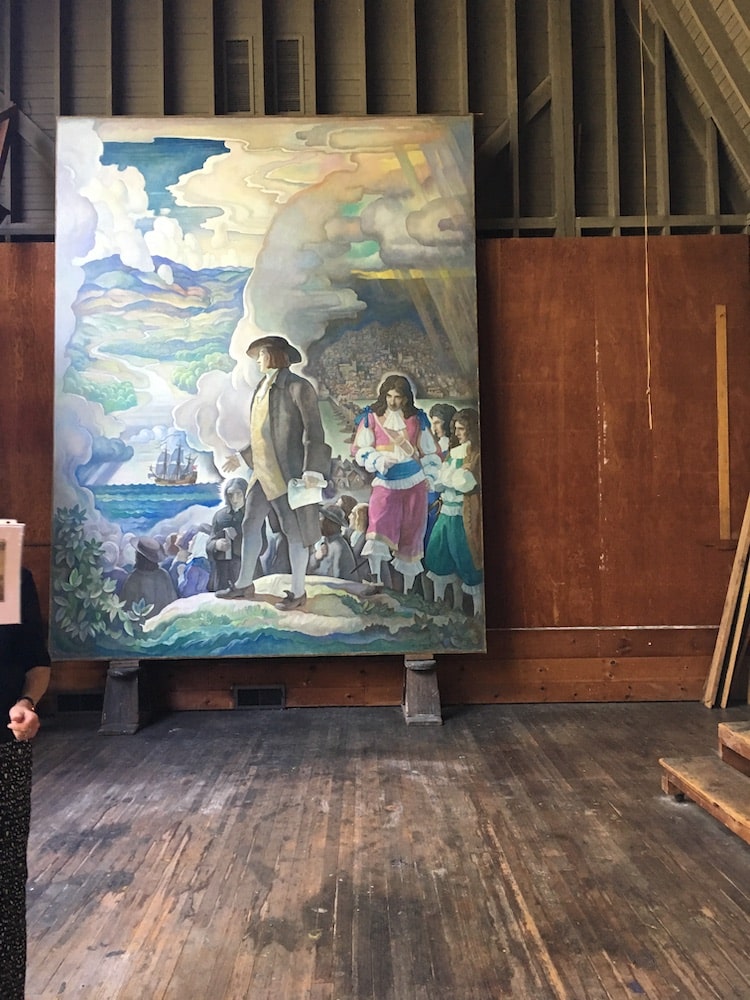
Photo: Sara Barnes / My Modern Met
Frequently Asked Questions
What was N.C. Wyeth known for?
N.C. Wyeth was known for illustrating many adventure books and advertisements in the 20th century.
Yes, N.C. Wyeth was Andrew Wyeth's father.
Related Articles:
What is Botanical Illustration? Learn About the History of This Scientific Art Form
10 Essential Art History Books for Beginners
Caricature Art: The Fascinating History of the Art of Exaggeration




